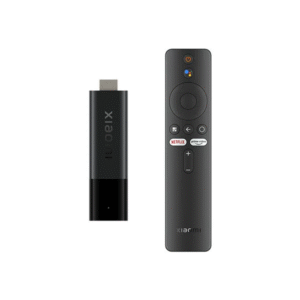In the past, a vehicle’s dashboard was a straightforward panel of gauges and dials, offering drivers only the most essential information. Today, the rise of the digital dashboard has redefined what drivers expect from their vehicles. It has become more than just an information panel—it is now a central hub for communication, entertainment, and safety.
The digital dashboard has transformed driving into an experience that is interactive, personalized, and highly connected. It is one of the most influential innovations shaping the modern automotive industry.
The Evolution of Dashboard Design
Traditional dashboards consisted of speedometers, fuel gauges, and indicator lights. While functional, they lacked adaptability and often limited the driver’s awareness of the vehicle’s condition. The introduction of digital technology changed this narrative completely.
Digital dashboards, powered by advanced display screens, offer flexibility and clarity. They can present a wide range of information in multiple layouts, ensuring that drivers see exactly what they need when they need it. This evolution has turned dashboards from passive indicators into active driving companions.
A Blend of Style and Function
One of the most remarkable aspects of the digital dashboard is the way it balances functionality with aesthetics. Modern dashboards often feature sleek LCD or OLED panels that blend seamlessly with interior design. They enhance the visual appeal of the vehicle while providing highly intuitive displays.
- Minimalist Interfaces: Clean layouts reduce clutter and improve readability.
- Adaptive Designs: The dashboard can adjust to different driving modes, such as eco, sport, or city driving.
- Visual Customization: Drivers can choose colors, themes, and display styles to match personal preferences.
By merging style and practicality, dashboards contribute to both driver satisfaction and brand identity.
Information at a Glance
The primary purpose of a dashboard remains the communication of critical information. Digital dashboards excel at this by offering clarity and adaptability.
- Speed and Performance Data: Presented in easy-to-read graphics that minimize distraction.
- Navigation Integration: Maps and directions are displayed directly in front of the driver.
- Safety Alerts: Warnings for low tire pressure, fuel levels, or mechanical issues are made highly visible.
- Driving Assistance Feedback: Information from lane departure systems or adaptive cruise control is integrated seamlessly.
This accessibility helps drivers make informed decisions without diverting their attention from the road.
Enhancing Driver Comfort
Beyond delivering information, digital dashboards also improve the overall driving experience. They provide comfort and convenience by connecting the vehicle to the driver’s lifestyle.
- Infotainment Integration: Music, podcasts, and calls can be managed directly from the dashboard.
- Climate Control Displays: Adjustments for heating, cooling, and seat settings appear intuitively on-screen.
- Smartphone Compatibility: Seamless pairing ensures safe access to apps, messages, and voice commands.
- Custom Profiles: Vehicles can remember individual driver preferences, from seat positions to display layouts.
These features allow for a smoother, more enjoyable ride, tailored to the needs of each driver.
Supporting the Transition to Electric Vehicles
As the world embraces sustainable mobility, digital dashboards have become indispensable in electric vehicles (EVs). Unlike traditional cars, EVs require more advanced monitoring systems to support their unique functions.
- Battery Range Visualization: Clear displays of remaining range help reduce driver anxiety.
- Energy Usage Feedback: Drivers receive insights on how their driving style impacts efficiency.
- Charging Information: Dashboards display nearby charging stations, charging times, and energy costs.
For EV drivers, the dashboard acts as a vital guide, ensuring smoother transitions between charging and driving.
Safety Through Smarter Displays
Safety has always been a priority in automotive design, and digital dashboards contribute significantly in this area. By centralizing and simplifying complex information, they help reduce distractions and keep drivers focused.
- Heads-Up Displays (HUDs): Project critical data directly onto the windshield.
- Color-Coded Warnings: Bright, attention-grabbing visuals indicate urgent issues.
- Integration with Driver Assistance Systems: Dashboards display lane alerts, blind spot monitoring, and collision warnings.
The result is a safer driving environment where critical information is presented clearly and effectively.
Challenges in Digital Dashboard Design
Despite their many advantages, digital dashboards are not without challenges.
- Overload of Information: Too many features can overwhelm drivers.
- Dependence on Technology: Software malfunctions may affect dashboard functionality.
- Adaptability for All Drivers: Not all drivers are equally comfortable with advanced digital interfaces.
Manufacturers continue to refine designs, focusing on usability, intuitive layouts, and fail-safe systems that maintain core functions even in case of glitches.
The Road Ahead: Future Innovations
As automotive technology continues to evolve, so will digital dashboards. Future trends are likely to include:
- Augmented Reality Dashboards: Projecting interactive navigation directly onto the windshield.
- Voice-First Controls: Allowing drivers to manage dashboard functions through natural speech.
- Artificial Intelligence Integration: Dashboards that learn driver habits and suggest optimized routes, music, or driving styles.
- Immersive Displays: Panoramic dashboards that extend across the entire front cabin.
These innovations will make dashboards more personalized and immersive, reshaping the driving experience entirely.
The Value of Professional Expertise
Given the complexity and importance of modern dashboards, maintaining their functionality is crucial. A well-functioning system ensures both comfort and safety on the road. That’s why it is always recommended to find a specialist near you who understands the technology and can provide the right guidance when needed.
Conclusion
The digital dashboard has become one of the most transformative innovations in modern vehicles. By blending style, functionality, and connectivity, it has turned the driver’s seat into a place of control, comfort, and confidence.
Whether it’s supporting electric vehicle drivers, enhancing safety, or personalizing the driving experience, the digital dashboard plays a central role in redefining mobility. As technology continues to evolve, it will remain at the forefront of the driving experience—guiding, informing, and connecting drivers like never before.






